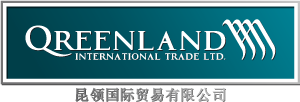Mai 19, 2018
Pricing
e-Commerce Pricing Strategies
5 tips that help your online company

Setting the right price is crucial if you launch your e-commerce business. How can you compete with online marketplaces like Amazon, eBay and Rakuten having highly competitive pricing tools that enable them setting prices dynamically? You will be able to compete but you need to adjust your mindset. Stop thinking about the product itself you are trying to sell online. You need to take in consideration also the value your product supplies and the unique selling point (USP). Here, you should take a step into your customer’s shoes and ask yourself about the products in your online-shop. Why should people buy your products instead of the ones of your competitors?
Tip 1: Unique Selling Point
Your unique selling point (USP) serves as a compass to navigate through competition. USP gives your customers a reason to buy from you rather than products from your online competitors. Identify what makes your business stand out of the crowd which you need to shout from the rooftop.
Some examples for USP may include:
• „German quality“,
• „made in Europe“,
• free delivery,
• free samples,
• donating money to charities,
• environmental awareness,
• greater assortment.
Simply find out what your customers can’t buy or get somewhere else. It is always helpful to understand the market you are in, but also market demand.
Tip 2: Value-Based Pricing
It is important to install value-based pricing as customers are more willing to pay your price if they get a value in return. Restaurants, for instance, often increase the price of their dishes without any change of value. So the customer gets the same dish for a higher price which is risky as customers don’t receive anything in return. You might loose them! Find value-based pricing that meets your customers’ expectations and creates an experience for them that aligns to their expectations. Communication is very helpful. Talk to your customers, ask for the information you need to know. What’s the value your customer receives? Is your customer satisfied with your service, the quality of your products, your policy? Value-based pricing strengthen your position in the market, and your brand name. If you are consistent, your credibility improves, too. See value-based pricing as win-win scenario. Customers are happy to buy your products at a price they want to afford while you receive customers that might buy again. You do want your customers to buy again, so give them a reason rather than thinking of high profit margins by selling only once to a customer. It needs time and budget to attract new customers. Satisfied customers that buy frequently your products, do require less resources than the acquisition of new customers.
Tip 3: Loss-Leader Pricing
To attract more customers to your online-shop, loss-leader pricing is the key. This strategy assumes that an item sold below market value encourages customers to buy more overall. That provides the opportunity to up-sell, cross-sell and increase the total shopping basket value. The profit might be small but the strategy stimulates customers to be interested in buying again, maybe products with higher profit margin. To minimize loss from the value a customer purchases a product and the value of the transaction you should choose an item that has a low cost per acquisition (CPA). The main emphasis is on making a sacrifice losing money on one item in order to make profit on other goods. Just pay attention to not overdo loss-leader pricing strategy as your customers might expect cheap items once you offered it too intensively.
Tip 4: Discounts
Everybody likes a bargain, so do your customers. If you use discounting wisely, it can boost traffic to your online-shop or may help to reduce dead capital – unsold stock. Stay on the same track with the other e-commerce companies. Black Friday, Christmas, seasonal happenings are just some hints that enables you to forecast sales and ensures that you can prepare everything in advance. Also here, if you overdo discounting, you might get the reputation of being a bargain seller. Discounting includes sales, coupons, seasonal pricing, and offers like buy 2 get 3 – you might attract price sensitive customer groups, that haven’t been your customers yet, so it’s a win-win scenario.
The main types of discounts are:
• Percentage discount on a product
• Cash amount discount on a product
• Selling a product for a fixed, reduced price
Tip 5: Pricing Intelligence Software
Pricing intelligence is the key that boosts your success. The right price, gain of market shares and sales require to monitor and investigate your competitors, but knowing the profitability of your products, too. If you don’t know what it’s going on in the market at any given time you won’t be able to use optimal pricing at optimal time. Software, pricing intelligence tools, help to gain pricing insights. They identify comparative price distributions and trends, your competitors’ terms of sale, pricing policies and the way they differentiate their items from yours. The information is available 24/7 that enables you to make the right decision whether it is a short or long-term goal.
Tags:
- acquisition
- assortment
- attract
- awareness
- bargain
- Black Friday
- boost
- brand
- budget
- business
- charity
- cheap
- Christmas
- company
- competition
- consistent
- coupon
- CPA
- credibility
- cross-sell
- customer
- dead capital
- delivery
- demand
- differentiate
- discount
- e-commerce
- expectation
- fixed price
- forecast
- free sample
- gain
- good
- happening
- identify
- increase
- intelligence software
- investigate
- item
- long-term
- loss
- loss-leader
- made in Europe
- made in Germany
- margin
- market
- marketplace
- monitor
- online-shop
- policy
- price sensitive
- pricing
- product
- profit
- profitability
- quality
- reduced price
- reputation
- return
- sale
- seasonal
- selling
- shopping
- shopping basket
- strategy
- success
- tool
- track
- traffic
- transaction
- trend
- unique selling point
- unsold
- up-sell
- USP
- value-based
- win-win scenario

